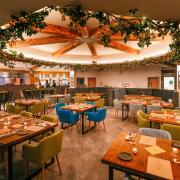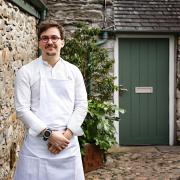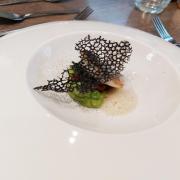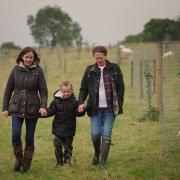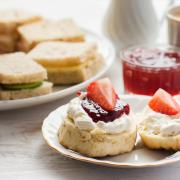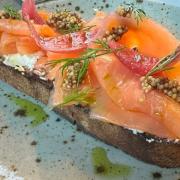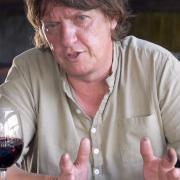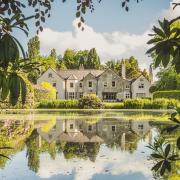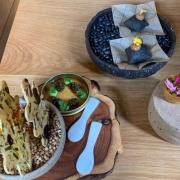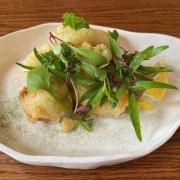Joanne Moore is the world's only female master gin distiller and she's based in Lancashire, giving a modern twist to a 250 year old spirit. Martin Pilkington reports
You might think that London Dry Gin is as Cockney as a Pearly Queen dancing the Lambeth Walk. But one of the country’s oldest distillers has never been within miles of Bow Bells. It’s actually right here in Lancashire.
It was back in 1760 when George III was being crowned King of Englandthat a man called Thomas Dakin was buying premises on Bridge Street inWarrington. His plans to start distilling were hit by a year-long grain shortage so it wasn’t until 1761 that production started.
This might not be the most obvious place to distil London Dry Gin, but thename actually refers to the style rather than any geography. And in the mid-18th century, as Lancashire was fuelling the Industrial Revolution, Warrington became major coaching centre with a lot of thirsty travellers arriving every day.
Inevitably much about the company has altered. Thomas’s son Edward sold the business to Edward Greenall in 1860 and the Bridge Street site was vacated in 1961.
But there are some constants. The original recipe is still used although it is stored on computer rather than on paper. However, not so long agodelivery instructions were bulldogclipped to a rope in the offices anddropped to van drivers below.
Another link with 1761 is that the bottles still bear the Latin motto Dakinchose for his first production - Alto Peto, which can be translated oppositely for a business trading in flavour as ‘I seek deeper.’
One event in 2005 briefly threatened to end the Greenall’s story - a massive fire that devastated the previous premises in Loushers Lane.
Christian Rose, the chief executive, says: ‘Thanks to the support we received even from competitors we were able to continue in business without interruption, and were back distilling within days.’
Greenall’s moved to a new site in Risley after the fire. It was a blessing indisguise – the company now accounts for seven per cent of global ginproduction.
The new plant is ultra-modern, 45 bottles of gin clanking along the lineevery minute, but the recipe for the main Greenall’s brand is the oneThomas Dakin developed in Georgian times. And such is the family nature of the workforce that Dakin might recognise some of the surnames.
However, what would he think of today’s master distiller? She is JoanneMoore, just the seventh person to hold the office in 250 years and the only female in such a role with any major gin company anywhere in the world. Her role does harks back to Dakin’s era - it is thought his wife ran the business after his death.
Precise details of the Greenall’s recipe are naturally secret, but Joanne is happy to discuss the eight ‘botanicals’ that go into every bottle.
‘To be gin, of course, it has to have juniper,’ she says. ‘Last year I went out with two colleagues to see the juniper harvest in Italy. It was an amazing three days going into the mountains – it’s all naturally grown wild on the mountain sides. It’s lovely to see how they do it, and how it’s a way of life. Juniper is very camphor-like, aromatic, smoky.
‘We get coriander from Morocco. It gives us a citrus, spicy note. Dried angelica root gives length of flavour. It’s the marmite of the botanical world; you either love it or hate it: very earthy, woody, it gives a bitterness that’s a nice match for tonic.
‘The lemon peel we use is from Murcia, from lemons grown specifically for the zest – the rest is a by-product for them. It’s amazing to see them peel a lemon in one strip.
‘Orris root – the root of the Iris Florentina – is again earthy, with a hintof tea-bag and some Parma violet.
Liquorice is another woody note on the nose, but on the palate it’s very sweet giving depth to the gin.
‘Bitter almond – the nut protein doesn’t come through distillation so thegin is safe for those with nut allergies – comes from Spain. And lastly Cassia, one of my favourite spices, which comes from Indo-China. It’s a bark, related to cinnamon, but a bit more forgiving, with Christmas and mince pie connotations.’
According to commercial director Caroline Whitfield longevity has itsmarketing benefits. ‘Old and tried brands like this are doing really well at the moment – maybe they’re more trusted in tough times,’ she says.
Thomas Dakin would be intrigued by a couple of new gins Joanne hasdeveloped for Greenall’s: Bloom which uses some chamomile and honeysuckle, and Berkeley Square, with a hint of lavender. She feels that being a woman has helped the process.
‘The analogy I use is that when women go shopping we have an idea foran outfit in our minds, we know what it should look like. I feel thesame way about gins. I have in my mind a very fixed idea about what it should smell and taste like.’
Dedicated to her craft, Joanne’s ambition is to create yet more gins for Greenall’s – she is working on something already. Christian Rose has abigger vision: ‘We want to ensure this company goes on for at least another 250 years.’



